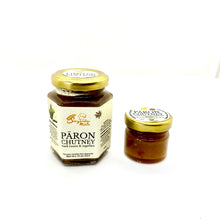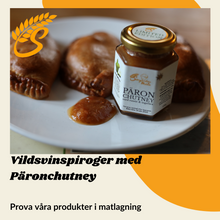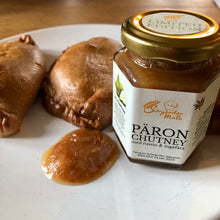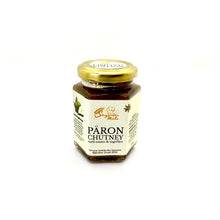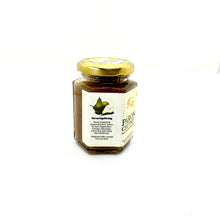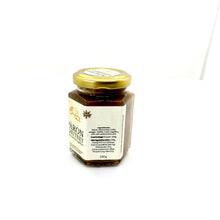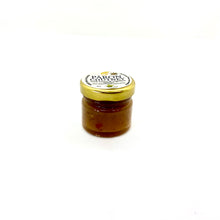
Discover a delicious combination that will tempt your taste buds with every bite. Pear chutney with raisins and ginger is the perfect accompaniment to all dishes! The complex flavors of sweet pears, tangy vinegar and spicy ginger and chilli create a combined taste sensation that takes your dishes to the next level. It has a strong yet spicy flavor that goes perfectly with all types of cheese such as gorgonzola, brie, stilton, gruyere and more. Whether you add it to a cheese platter, to a barbecue, to lunch/dinner or a venison pie - this chutney has everything you need to transform any meal from ordinary to extraordinary.
Originating in Indian cooking, the name chutney comes from the word catni which means spicy in Hindi - so get ready for a taste adventure! This unique blend of ingredients will take you around the world without ever leaving your kitchen. You'll be surprised what a simple spice can do! Whether you put this delicious chutney on your sandwich or use it as part of a meat dish - its unique taste will leave everyone wanting more. Chutney goes well with chicken, pork, grilled vegetables or Indian dishes. Give your meals some global flair with Pear Chutney with Raisins and Ginger - try it today and let the flavors transport you!
A muscle pack and a big sibling to the pear jams. In a spring sun-golden crust and with warming flavors, this is a joy to look at and a delight to mouth. A powerful brew in every respect, its seductive aromas and lush flavors are truly something to be enjoyed at any time of the year.
Goes well with Gorgonzola, Brie, Stilton, Gruyere, Appenzeller, Cheddar, Manchego, try it with a cold venison pie or mince pie
Pear (Pyrus communis) is a species in the pear genus, which grows in temperate climates. Pears are grown for the sake of the fruit, and are almost as hardy as apples
The pear has probably been cultivated as long as the apple tree and existed in Greece as early as 1,000 years BC. In Sweden, pear seeds have been found in grave finds from the Neolithic and cultivation has been known since the Middle Ages. During the Middle Ages, pears were grown in Sweden, and in the 18th century there were many varieties, e.g. bergamot and August pear. The gray pear with its thick, rough skin and sweet, juicy flesh is also old, as is the now rare pear, which Per Brahe is said to have introduced from Germany.[1]
Ingredients: Pears, raw cane sugar (16%), vinegar, red onion, raisins, ginger, chili, salt, cumin, anise
Amount of fruit 65 g per 100g
Nutrition declaration 100g: Energy 507 kJ/120 kcal; Fat 0.2 g (saturated fat 0 g); Carbohydrates 29 g (of which sugars 28 g); Protein 0.6 g; Salt 0.9








